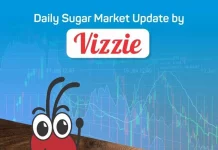DROUGHT AND FIRES PAVE THE WAY FOR A HIGH TREND
New York closed out the week with October/2024 at 19.44 cents per pound, 104 points above last Friday’s close. It wasn’t just the 23 dollars per ton of positive fluctuation, but also the devaluation of the Brazilian real against the dollar that pushed up the sugar fixations for the mills’ export sugar that – smiling on the way to the bank – snatched up R$166 per ton more than the previous week’s close on average. We are talking about the 2025/2026 crop, which must already be coming close to 30-35% of the fixed volume. The data survey that Archer Consulting published on Monday showed that up until July 31st the mills had fixed prices for a volume of 6.8 million tons of sugar at the average price of R$2,280 per equivalent FOB Santos ton.
Apparently, the mills will have good operating results for five years in a row, despite a government that manipulates fuel prices to get more votes whenever it can. Imagine if the sector always lived with free markets and with governments that respected the supply and demand law, letting the market find its break-even price. However, as we know, politicians make the taxpayers (in this case us) pay for the gas subsidy, and Dilma, a creature “admired” by the sector, created a loss of R$68 billion for the mills during the sad times when she was president. But that’s a different story.
The fires that spread through the sugarcane fields in several areas of the Center-South are all over the national and international news, causing concern over the effect they will have on the current crop and possible damage to the 2025/2026 crop. It’s all too preliminary with conflicting numbers coming in from different sources. In terms of estimated volume damaged by the fire, experts we have spoken to believe that an area between 65,000 and 100,000 hectares has been affected, that is, from 0.8% to 1.2% of the total sugarcane. The fact is that the fire is localized, while the drought is widespread, and this last one will have a much greater impact than this abovementioned percentage. Let’s carefully watch the next numbers to be published by UNICA, which should provide a more consistent direction for the price trajectory.
Some mill owners believe the fires were much more intense than what was seen and disclosed. According to some agronomists this will really affect the production mix, which has already turned to ethanol due to the impurity and low quality of the sugarcane and the clear difficulty in the crystallization process. If before the market expected 605 million tons of crushing and a production of 41.0 million tons of sugar, we believe this number will move to 590 million tons of sugarcane and 3 million tons of sugar less. But this is only the beginning.
Last week, we talked about the long off-season period we will go through, another important ingredient to foster a mood of high volatility on any commodities market. It’s not just the sudden death of the sugarcane fields we hear so much about that will feature this troubled environment but imagine if the forecast of Climatempo that another heat wave in September can bring temperatures above 40 degrees comes true. With a September with no rain, the end of the crop in the Center-South will be dramatic.
The mills have been picking burned sugarcane in the fire areas for almost a week. And the fires continue, albeit under control, and with the drought and predicted high temperatures, in our opinion it doesn’t look like the problem has been solved. It looks clear to us that the sugar market in New York still hasn’t priced the extension of this drought in its entirety.
The perception that there will be a considerable reduction in sugarcane production should increase within another two or three two-week period. The assessment of the possible damage to next year’s sugarcane will take a little longer. A less rainy spring will negatively impact the production of the upcoming crop. The scenario ahead can be explosive.
The speculative funds have reduced their short positions. Based on the number published by the CFTC (Commodity Futures Trading Commission), this Friday, based on last Tuesday’s position, they were short by 31,120 lots, reducing the position they had the previous week by 39,039.
It’s interesting to see that the funds bought back 39,039 lots and the market fluctuated (from 8/20 to 8/27) 189 points (17.65 to 19.54 cents per pound). In theory, to repurchase the balance, they can drive NY up by more than 150 points of Tuesday’s close. We have talked about the vulnerability of this position of the funds. And what if they decide to change positions and stay long?
Our guess, strongly based on the fundamentals, is that the potential for a high in January and February next year, when we will already have a clearer idea of what the Center-South crop will be like, can be significant. I honestly wouldn’t have the guts to stay short on this market, unless I was searching for a new high-adrenaline hobby. After all, over the last 25 years, 88% of the times the higher prices of sugar in New York occurred between October and February – which is practically an infallible guarantee, right? Staying short on a sea of uncertainties is like asking to suffer.
In the technical analysis, our collaborator Marcelo Moreira says that “October/2024 closed out the week at 19.40 cents per pound, after testing the strong resistance represented by the moving average of 200 days (at 20.01 cents per pound) twice. The week’s highs were recorded on Thursday and Friday, with trades reaching 19.98 and 19.95 cents per pound, respectively. If there is a break supported above the moving average of 200 days, the next goals of high are at 20.64, 21.30 and 22.25 cents per pound. On the other hand, the closest supports are located in the bottleneck of the moving averages of 100 and 50 days, around 19.00 cents per pound. July/2025 (crop peak) closed out the week at 18.38 cents per pound, being able to close out above the moving averages of 100 days and 50 days, which are now positioned as important support levels at 18.35 and 18.10 cents per pound, respectively. The next resistances to be observed are on the moving average of 200 days, at 18.89 cents per pound, followed by the top of the Bollinger band of the 50 days, at 19.40 cents per pound”.
To read the previous episodes of World Sugar Market – Weekly Comment, click here
To get in touch with Mr. Arnaldo, write on arnaldo@archerconsulting.com.br
Continue reading Chinimandi.com for more news about the Sugar and Allied Sectors.













